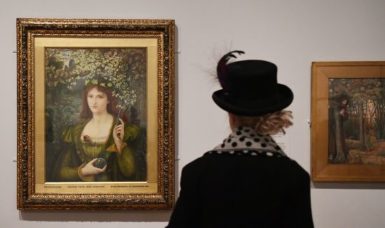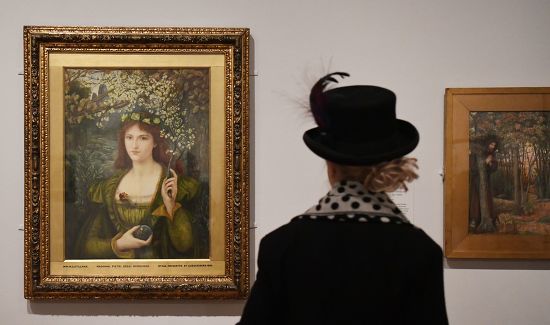[ad_1]

A visitor looks at “Sestina of the Lady Pietra degli Scrovigni” by Dante Alighieri at London’s National Portrait Gallery
FACUNDO ARRIZABALAGA/SHUTTERSTOCK
While it undergoes the largest redesign project in its history, the National Portrait Gallery in London will close for three years.
On June 29, the museum will temporarily shutter while it takes on a renovation initiative due to cost £35.5 million, or around $45.6 million. It will reopen in the spring of 2023 with a total rehang of the collection and new public entrance designed by Jamie Fobert Architects.
Over the course of the next three years, 300 portraits from the museum’s holdings will tour institutions across the United Kingdom, with stops planned for the National Museums Liverpool, the Laing Art Gallery, and the Scottish National Portrait Gallery. Upcoming exhibitions include a partnership with York Art Gallery in 2021 and a show of Tudor portraits at the Holburne Museum in Bath. According to the Art Newspaper, the museum is actively seeking partnerships with organizations to expand its programming during the closure.
“This is a unique and important chapter in our history as we embark on our journey to deliver a transformed National Portrait Gallery, which will enable us to become more welcoming and engaging to all and fulfill our role as the nation’s family album,” Nicholas Cullinan, director of the National Portrait Gallery, said in a statement to the BBC.
The remodeling also includes a restoration of gallery spaces in the museum’s East Wing and the creation of new catering facilities. The archive and library will remain open through 2023. A spokesperson for the gallery told the Art Newspaper that staff changes and some job losses will follow the closure: “Where possible, staff will be offered part-time working and career break opportunities and the Gallery is looking at a range of secondment opportunities with other institutions during the building period.”
[ad_2]
Source link

